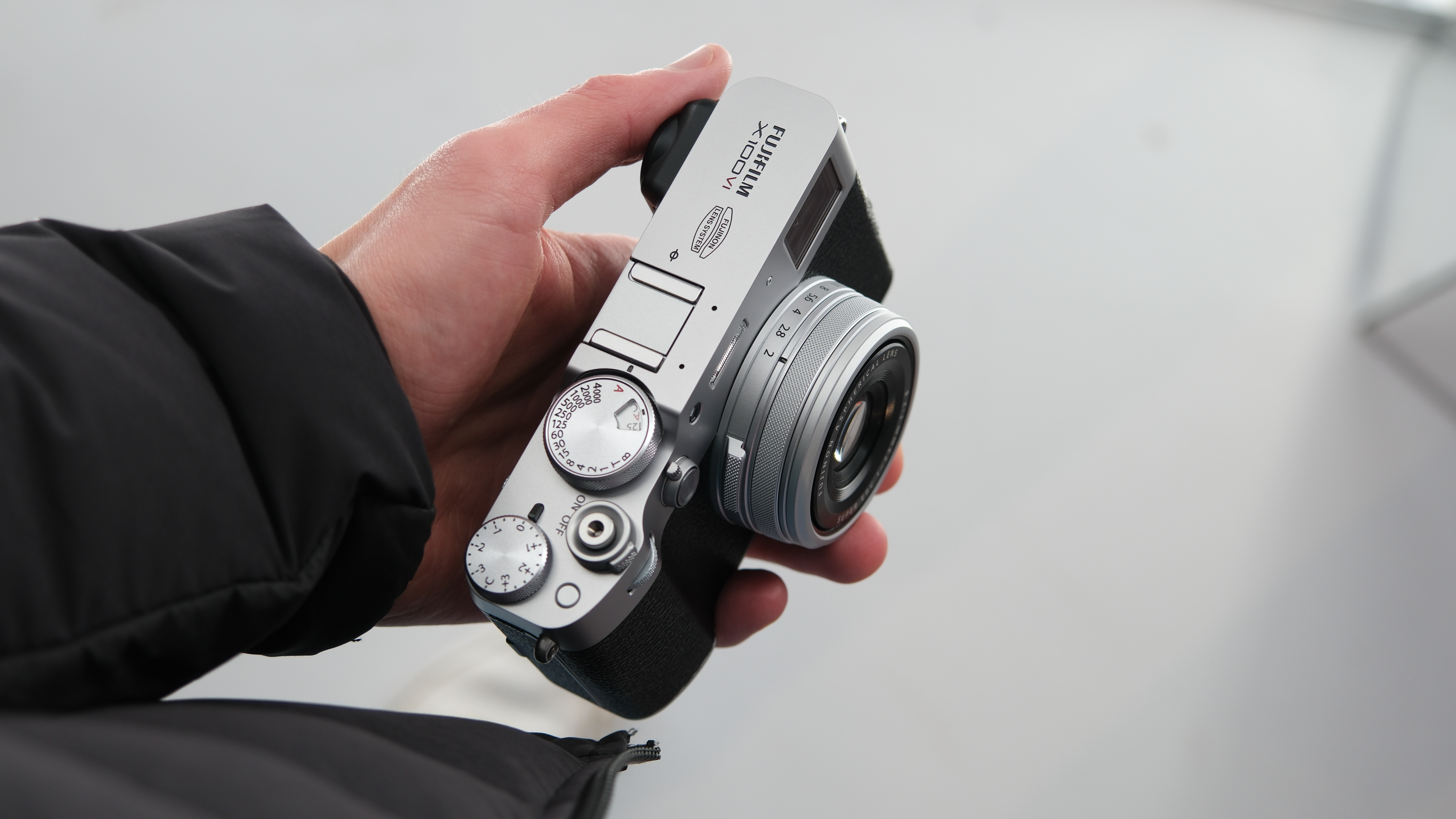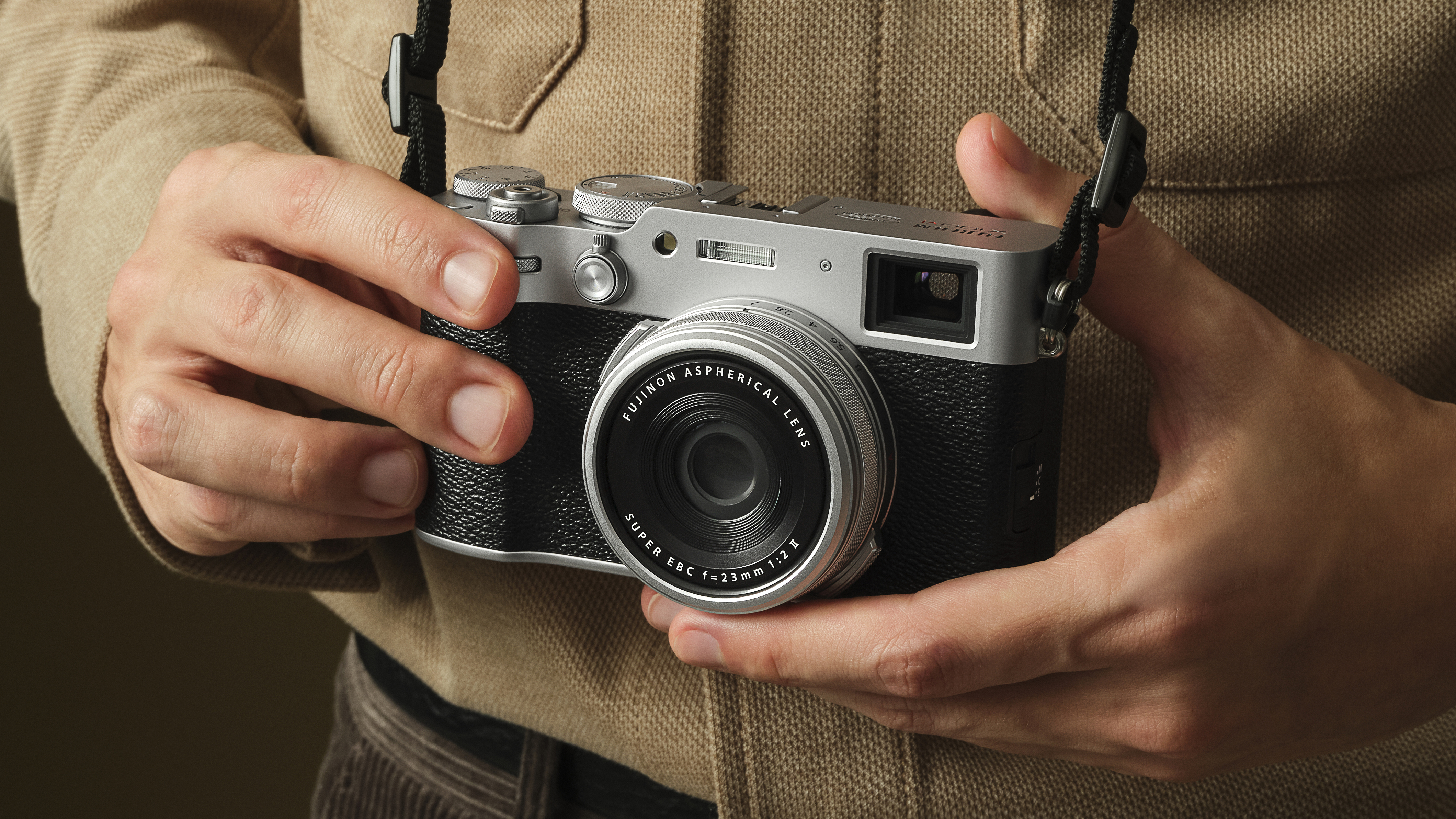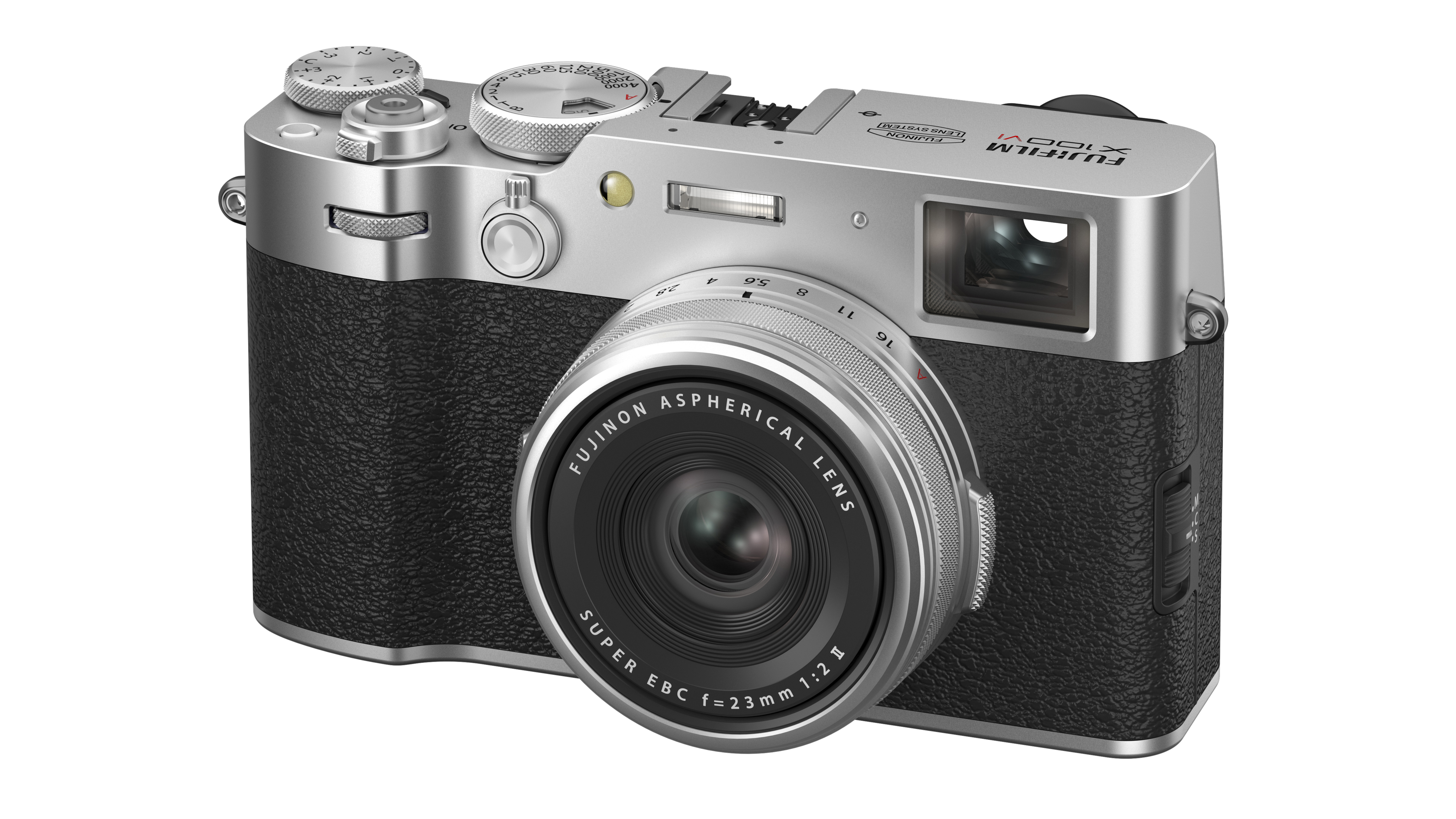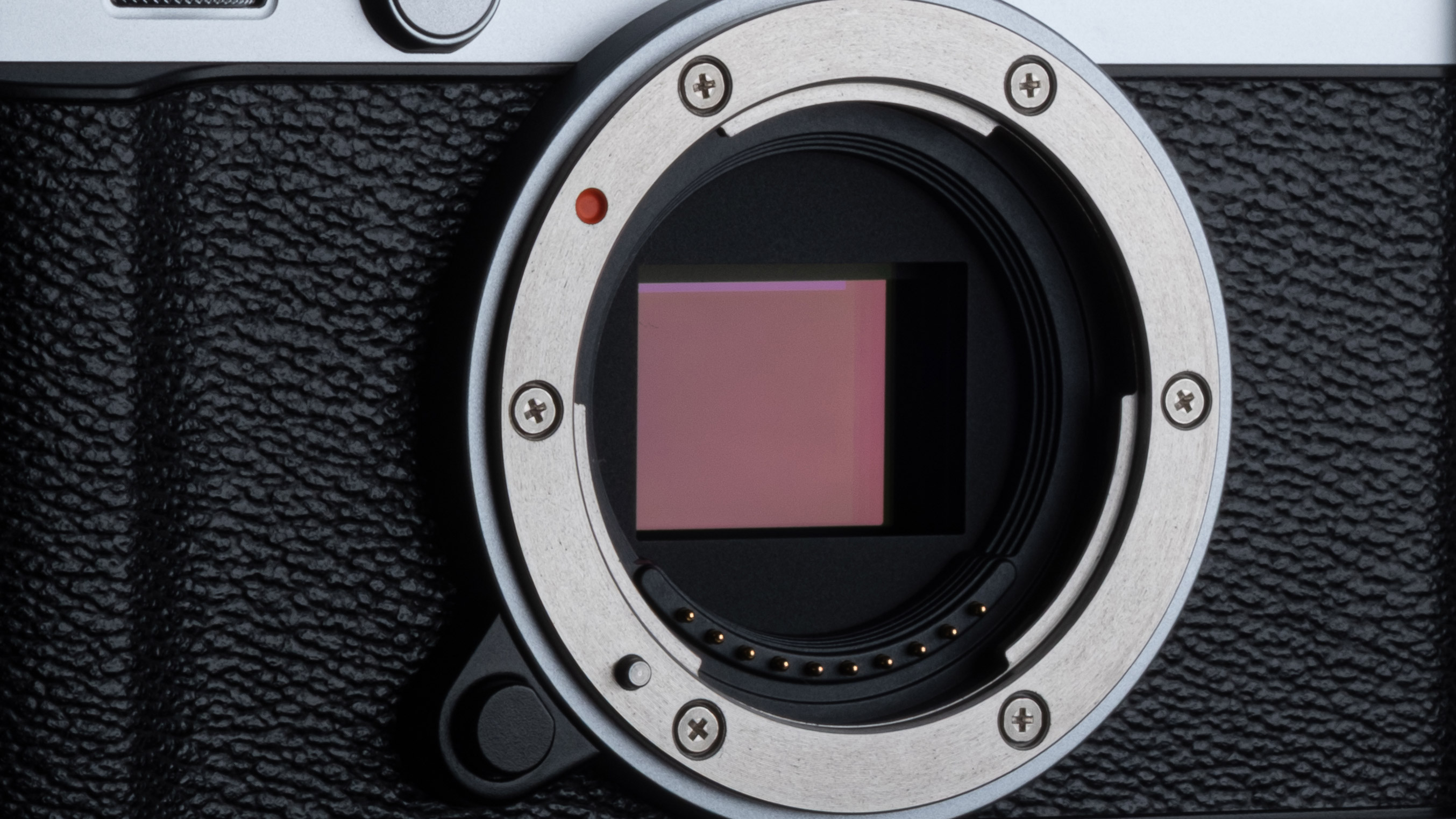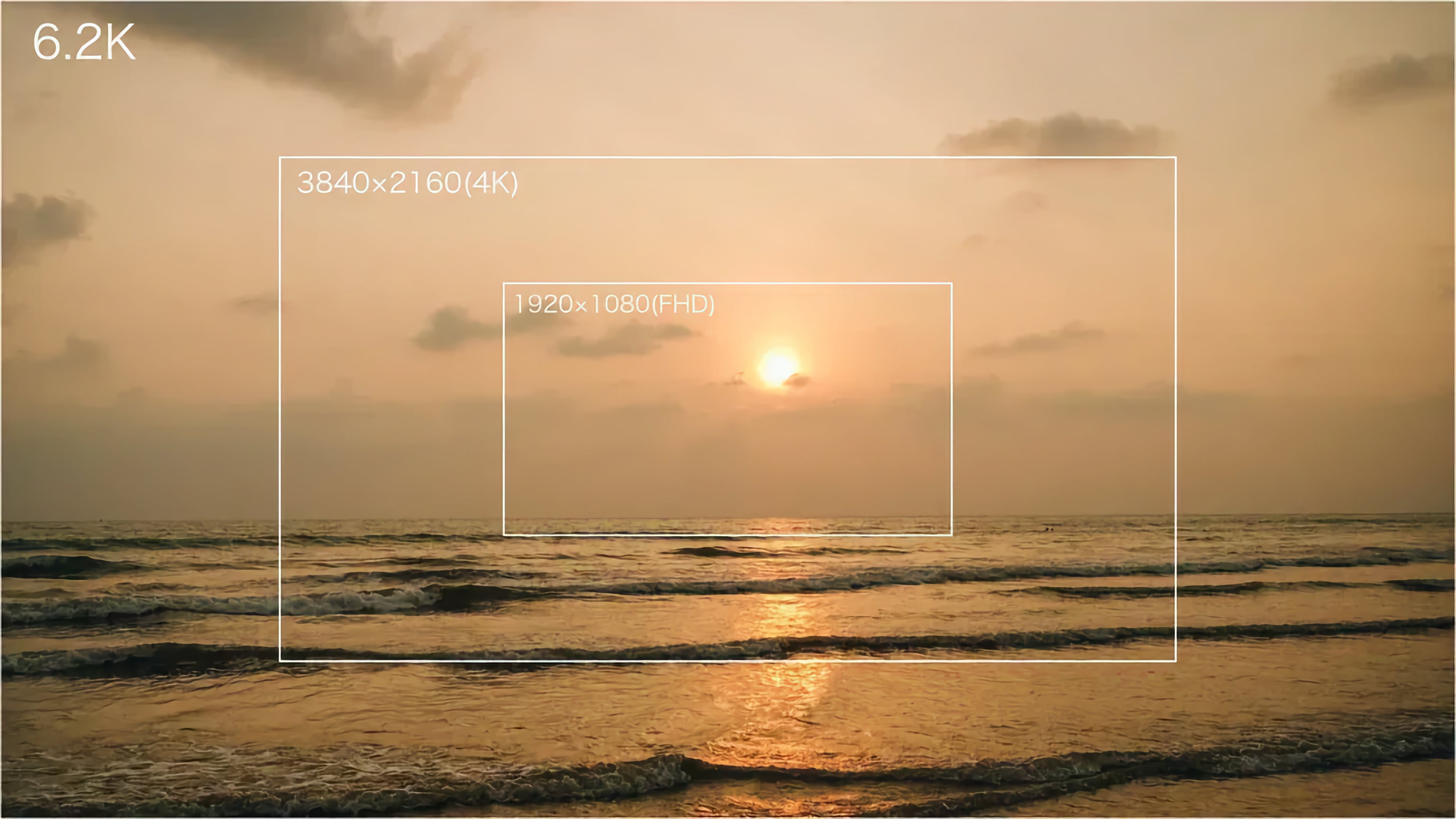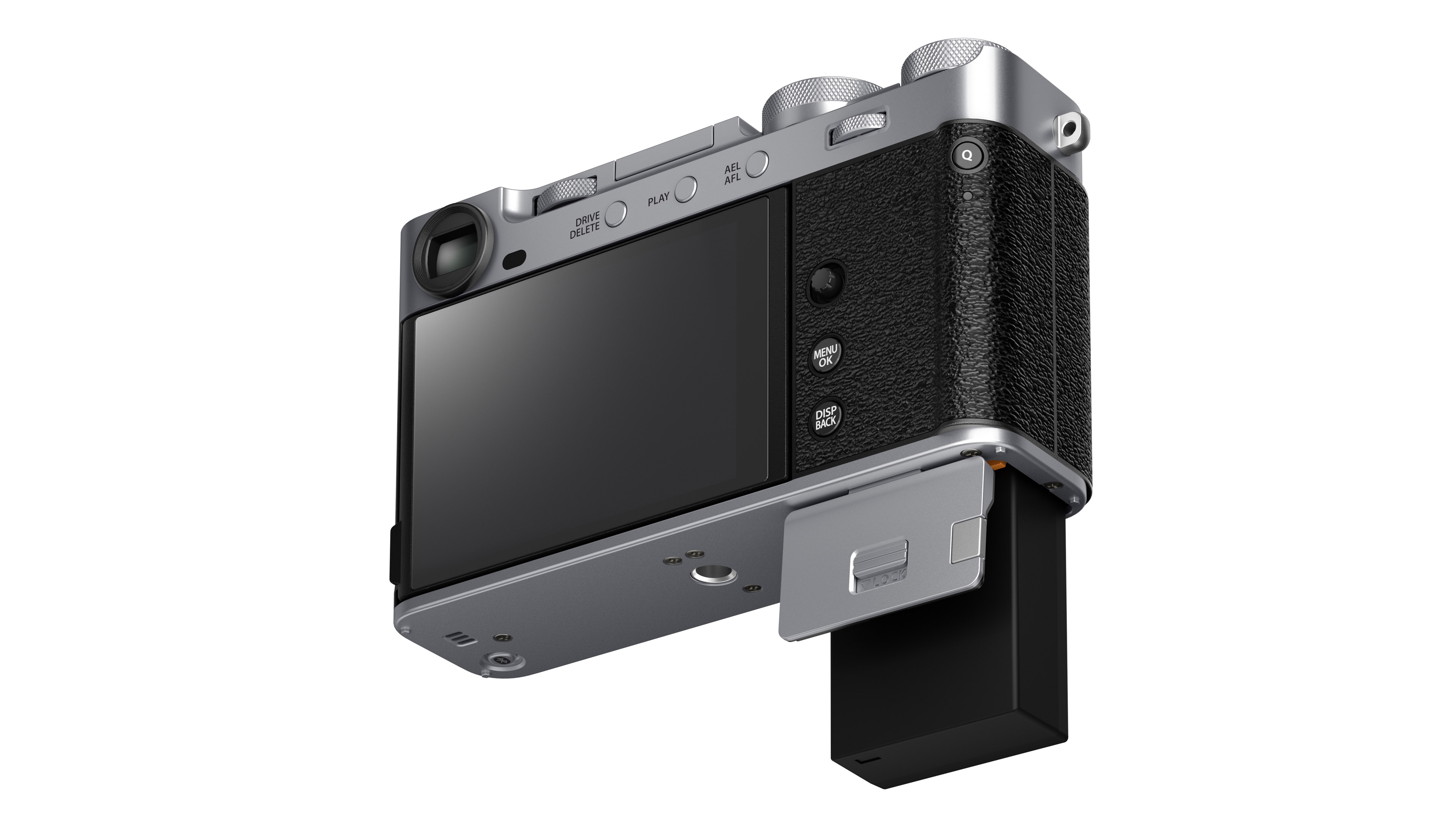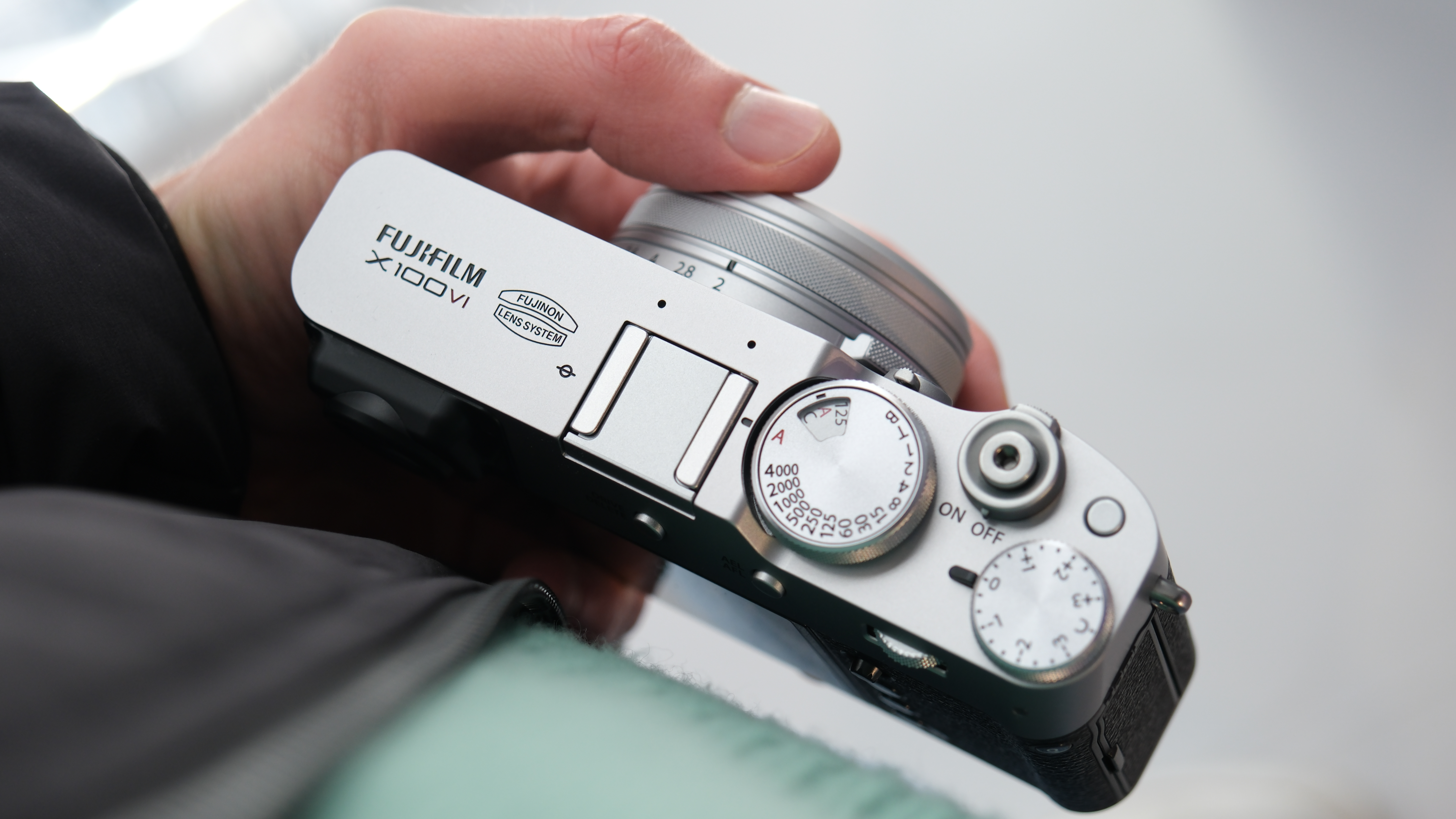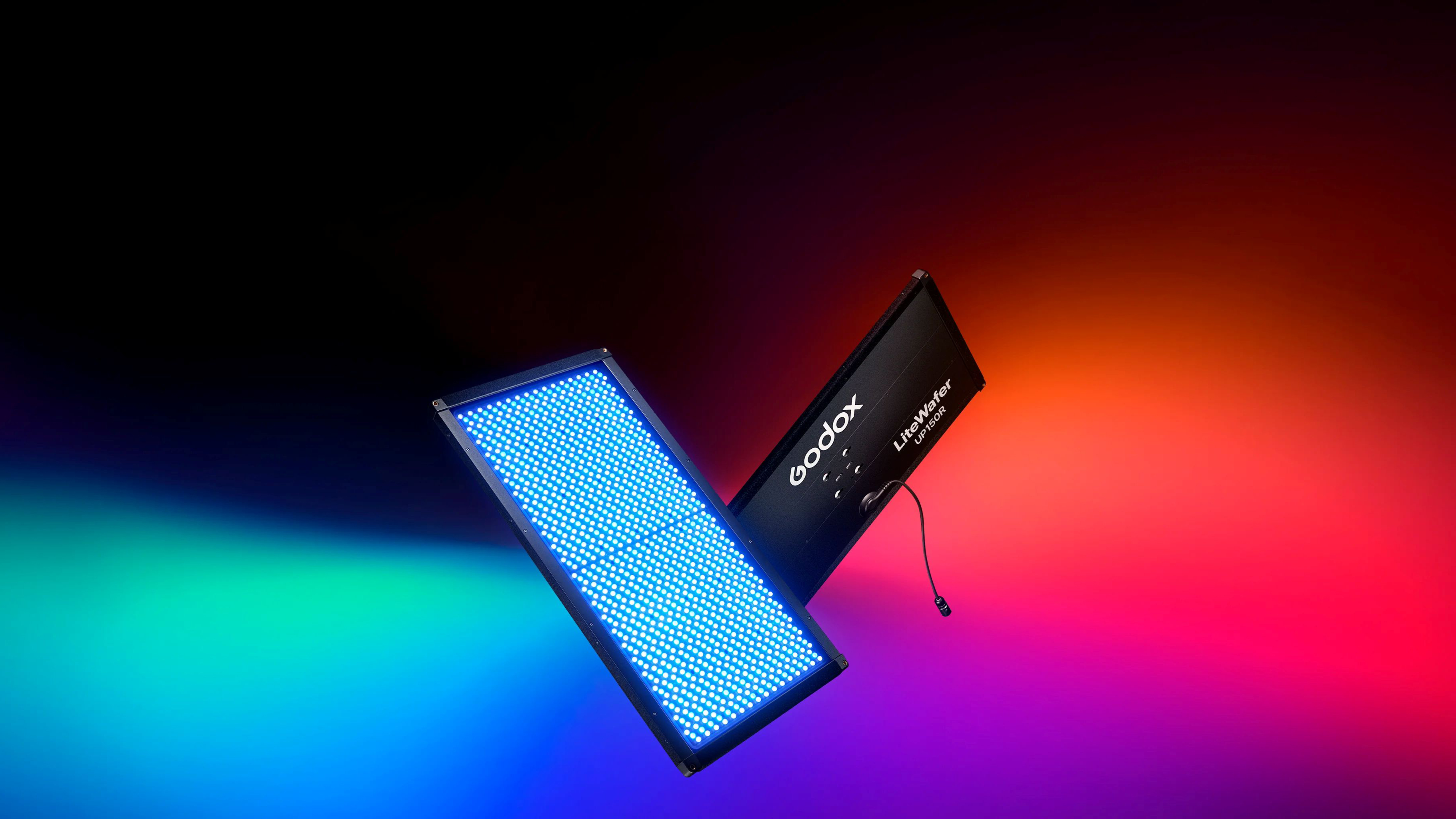Fujifilm X-E5 vs X100VI – classic compact camera takes on retro mini mirrorless
Given up trying to get a Fujifilm X100VI? Maybe the Fujifilm X-E5 is the perfect substitute? Let’s see how they compare
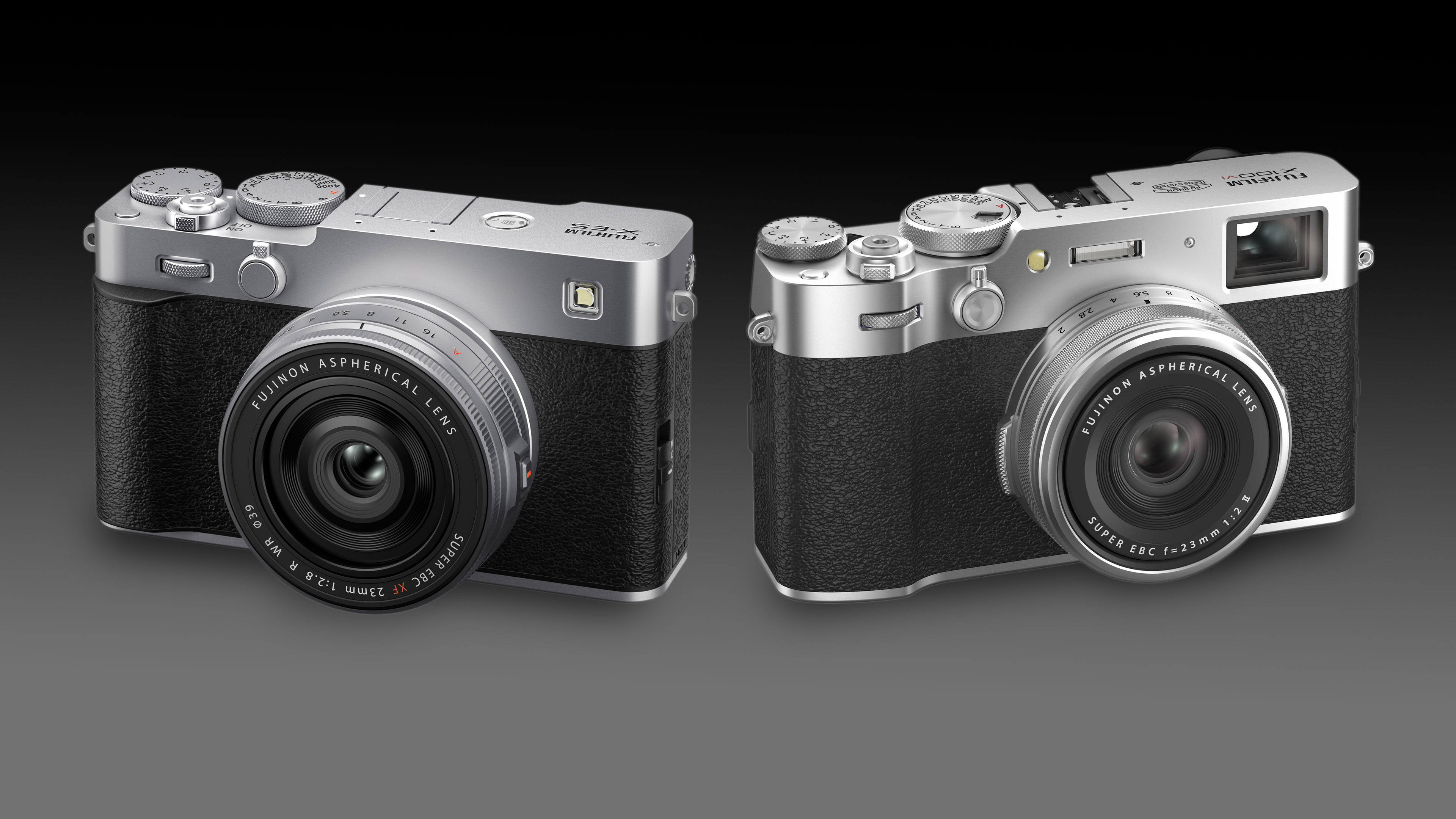
The Fujifilm X100VI is legendary for all sorts of reasons, mostly because it’s still really hard to find in stock anywhere, even though it was launched way back in February 2024. Not surprisingly, people will be looking for an alternative – a camera with the same retro style and traditional exposure dials, but which you can actually buy. And the Fujifilm X-E5 could be that camera.
Like the Fujifilm X100VI, the Fujifilm X-E5 sports a rectangular rangefinder-style body of around the same size and weight once you allow for lenses. Internally, the sensor, autofocus, stills and video capabilities are practically identical, and the key differences are on the outside.
While the newer X-E5 can be considered one of the best Fujifilm cameras to buy right now, and perhaps amongst the best retro cameras on the market, the Fujifilm X100VI definitely belongs in that list too, and is also one of the best compact cameras ever.
So let’s take a closer look at the specifications and design features of these two cameras to see which one is going to be best for your needs, and whether the Fujifilm X-E5 is a genuine alternative to the legendary and largely unobtainable X100VI.
Fujifilm X-E5 vs X100VI
Why you can trust Digital Camera World
1. Design
• Fujifilm X-E5: Interchangeable lens rangefinder style mirrorless
• Fujifilm X100VI: Fixed lens rangefinder-style compact
At first glance these two cameras do look quite similar. Both have a rectangular rangefinder-style body shape with viewfinders in the top left back corner and traditional exposure dials. The X100VI has a combined shutter speed/ISO dial, while the X-E5 does not have a physical ISO dial but does have a Film Simulation dial viewed through a window on the top plate.
Fujifilm has started adding Film Simulation dials to its newer cameras, including the X-M5 and X-T50, not just the X-E5. The Fujifilm X half even has a film canister ‘window’. The X100VI’s design precedes all this, so if Film Simulations float your boat then the X-E5 has an advantage here.
2. Lenses
• Fujifilm X-E5: Interchangeable, Fujifilm X-mount
• Fujifilm X100VI: Fixed 35mm equivalent f/2
This is the key difference between these two cameras. The Fujifilm X-E5 is a regular X-mount mirrorless camera, and you can buy it body only if you already have X-mount lenses or as a kit with the new Fujinon 23mm f2.8 WR pancake prime (35mm equivalent).
The X100VI, however, has a fixed lens, and while you can simulate longer focal lengths with its digital teleconverter feature, this is basically a crop mode that leverages the sensor’s 40MP resolution. You can also get wideangle and telephoto converters that fit to the front, but these add to the bulk and the cost and aren’t really a substitute for interchangeable lenses.
If the X100VI’s 35mm equivalent f/2 prime lens is perfect for you, then it beats the X-E5’s alternative pancake kit lens, which is only an f/2.8. But if you are at all worried about being restricted to a single lens, then the X-E5/23mm f/2.8 bundle gives you a similar feel but much more scope later.
3. Viewfinder
• Fujifilm X-E5: 0.39 in OLED, 2.36m dots, 100% coverage, 0.62x magnification
• Fujifilm X100VI: Hybrid OVF/EVF, 0.5 in OLED, 3.69m dots
Here’s another big difference. Where the Fujifilm X-E5 offers a conventional EVF, and a pretty ordinary one at that, the X100VI has a clever hybrid viewfinder which offers an optical real-world view or an EVF display which has a larger 0.5 in OLED panel and a higher 3.69m dot resolution.
The X-E5’s EVF is functional enough, but the hybrid viewfinder in the X100VI is in another league. It’s superior even if you use it only as an EVF, but used as an optical viewfinder it recreates the look and feel and immersiveness of classic direct-vision viewfinders.
4. Stabilization
• Fujifilm X-E5: 5-axis IBIS, 7 stops compensation center, 6 stops periphery
• Fujifilm X100VI: 5-axis IBIS, 6 stops compensation
Fujifilm has done well to incorporate in-body stabilization into both of these cameras. It’s the first time an X-E series camera has got IBIS and it’s also a first for the X100 series cameras. There is a slightl difference in the quoted shake compensation levels, but this may not show in real-world use.
5. Sensor/AF
• Fujifilm X-E5: 40MP X-Trans 5 HR, X-Processor 5
• Fujifilm X100VI: 40MP X-Trans 5 HR, X-Processor 5
Both cameras use Fujifilm’s 40MP X-Trans 5 HR sensor and X-Processor 5 processor. The ISO range is the same for both cameras too, from ISO 125-12,800 in standard mode and ISO 64-51,200 in expanded mode.
The AF system is the same too, featuring Fujifilm’s latest hybrid AF with subject detection, with up to up to 25 x 17 focus zones. Essentially, it’s the same imaging and AF hardware in two different bodies, and neither camera holds an advantage.
6. Stills/video
• Fujifilm X-E5: 7,728 x 5152px, 20 Film Simulations, 6.2k open gate 30p, 4K/4K DCI up to 60p, FHD up to 240p
• Fujifilm X100VI: 7,728 x 5152px, 20 Film Simulations, 6.2k open gate 30p, 4K/4K DCI up to 60p, FHD up to 240p
It’s the same situation for stills and video capture. The still image resolution is the same, and both cameras feature a set of 20 Film Simulations – though these are more directly accessible on the X-E5.
Surprisingly, perhaps, the X100VI matches the X-E5 for video features, right up to its 6.2K open gate capture. Video shooters are probably more likely to choose the X-E5 because of its interchangeable lenses, but if the X100VI’s 35mm equivalent focal length is just what you need, then the X100VI is just as good.
7. Continuous shooting
• Fujifilm X-E5: 8fps mechanical, 79 compressed raw, 20fps electronic, 1.29x crop, 66 compressed raw
• Fujifilm X100VI: 6fps mechanical, 36 compressed raw, 20fps electronic, 1.29x crop, 52 compressed raw
There is a slight difference between these two cameras’ burst shooting speeds. You probably wouldn’t choose the X100VI for fast action anyway, but if you did you would find its mechanical shutter slightly slower at 6fps vs the X-E5’s 8fps, and while the maximum 20fps electronic shutter burst rate is the same on both cameras, the X-E5 does have a slightly larger buffer capacity.
8. Battery/storage
• Fujifilm X-E5: NP-W126S, 400 shots, 1x SD UHS II
• Fujifilm X100VI: NP-W126S, 310/450 shots EVF/OVF, 1x SD UHS I
The X-E5 and X100VI use the same NP-W126S lithium ion battery, but the X100VI shows the greatest variation in battery life, with 310 shots if you use the EVF (worse than the X-E5) and 450 shots if you use the OVF (better than the X-E5).
Interestingly, Fujifilm’s spec sheet lists the X100VI as having a UHS I memory card slot while the one in the X-E5 is UHS II compatible. This doesn’t seem to affect the X100VI’s key video specifications, but may explain the lower buffer capacity in burst mode.
9. Size and weight
• Fujifilm X-E5: 124.9 x 72.9 x 39.1mm, 455g body only
• Fujifilm X100VI: 128.0 x 74.8 x 55.3mm, 521g
On paper, the X100VI looks the slightly larger and heavier camera, but keep in mind that the quoted dimensions for the X-E5 are body-only. Once you add a lens, even the diminutive XF23mm f/2.8 WR, the equation changes, and the X-E5 becomes the slightly heavier camera. There’s really very little to choose between them.
10. Price
• Fujifilm X-E5: $1,699 / £1,299 (body only)
• Fujifilm X-E5 + 23mm f/2/8: $1,899 / £1,549
• Fujifilm X100VI: $1,599 / £1,599
When comparing prices for the Fujifilm X-E5 and the X100VI, you have to remember that the X-E5 may be sold body only, and that with the XF23mm f/2.8 kit lens added it does become more expensive. The price for the X100VI, of course, includes the lens.
Both these cameras are expensive for APS-C models. It’s been that way for some time with the X100 series, but the X-E5 does bring a big jump up in price compared to the X-E4 before it, but then it does have a higher resolution sensor, IBIS and more powerful video capabilities.
In the US, the X-E5 is currently slightly more expensive than the X100VI, even in body-only form. In the UK, the positions are reversed and the X-E5 is significantly cheaper when bought as a body, and similar in price to the X100VI if bought with the XF23mm f/2.8 lens.
Which one is better value? That’s a subjective decision which will depend on which one most closely matches your shooting style and needs. Their prices are pretty similar overall.
Fujifilm X-E5 vs X-E5: conclusions
Is the Fujifilm X-E5 a genuine alternative to the X100VI? In terms of its basic technical specifications, then yes. It’s also a much more versatile camera simply because you can swap lenses. For anyone building an X-mount camera system it’s clearly the better choice, whereas the X100VI is more of a ‘second’ camera.
But if what you really want is the X100VI, then while the X-E5 is a decent substitute technically, it’s not the same. It doesn’t have the X100VI’s high-quality hybrid viewfinder, it doesn’t have its combined shutter speed/ISO dial, and it doesn’t have any direct equivalent to the X100VI’s f/2 pancake lens.
The X-E5 is the more versatile camera by far, but it is a bit of a pale substitute if what you really longed for is the fixed-lens retro ‘classicism’ of the X100VI.
Check out the best accessories for the Fujifilm X100VI, and see our choice of the best Fujifilm lenses
The best camera deals, reviews, product advice, and unmissable photography news, direct to your inbox!

Rod is an independent photography journalist and editor, and a long-standing Digital Camera World contributor, having previously worked as DCW's Group Reviews editor. Before that he has been technique editor on N-Photo, Head of Testing for the photography division and Camera Channel editor on TechRadar, as well as contributing to many other publications. He has been writing about photography technique, photo editing and digital cameras since they first appeared, and before that began his career writing about film photography. He has used and reviewed practically every interchangeable lens camera launched in the past 20 years, from entry-level DSLRs to medium format cameras, together with lenses, tripods, gimbals, light meters, camera bags and more. Rod has his own camera gear blog at fotovolo.com but also writes about photo-editing applications and techniques at lifeafterphotoshop.com
